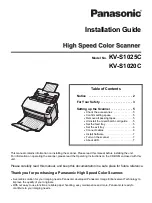
56
Advanced Scanner Configuration Guide
Revision: 2.0 , technical changes excepted
of one information bit. A zero bit consists of a narrow bar followed by a wide space,
while one bit consist of a wide bar followed by a narrow bar. The zero bit is one unit
bar followed by a two-unit space and the one bit is a two-unit bar followed by a one
unit space. The primary application for the MSI code is marking of retail shelves
and subsequent scanning with portable devices for inventory purposes.
Nominal
The exact (or ideal) intended value for a specified parameter. Tolerances are
specified as positive and negative deviations from this value.
Nominal Size
Standard size for a bar code symbol. Most UPC/EAN codes can be used over a
range of magnifications (e.g., from 0.80 to 2.00 of nominal).
NOTIS Editing
An option that strips the start and stop characters from a decoded Codabar
symbol.
Parameter
A variable that can have different values assigned to it.
Percent Decode
The average probability that a single scan of a bar code would result in a
successful decode. In a well-designed bar code scanning system, that probability
should approach near 100%.
Print Contrast Signal (PCS)
Measurement of the contrast (brightness difference) between the bars and spaces
of a symbol. A minimum PCS value is needed for a bar code symbol to be
scannable. PCS = (RL - RD) / RL, where RL is the reflectance factor of the
background and RD the reflectance factor of the dark bars.
Programming Mode
The state in which a scanner is configured for parameter values. See
Scanning
Mode
.
Quiet Zone
A clear space, containing no dark marks, which precedes the start character of a
bar code symbol and follows the stop character.
Random Access Memory (RAM)
Memory devices where any location in memory can be accessed as
quickly as any other location.
Reflectance
Amount of light returned from an illuminated surface.
Resolution
The narrowest element dimension which can be distinguished by a particular
reading device or printed with a particular device or method.
RTS
Request to send.
RxD
Received data.
Scan Area
Area intended to contain a symbol.
Scanner
An electronic device used to scan bar code symbols and produce a digitized
pattern that corresponds to the bars and spaces of the symbol. Its three main
components are:
Light source (laser or photoelectric cell) - illuminates a bar code.
Photo detector - registers the difference in reflected light (more light reflected from
spaces).
Signal conditioning circuit - transforms optical detector output into a digitized bar
pattern.
Scanning Mode
The scanner is energized, programmed, and ready to read a bar code.


































